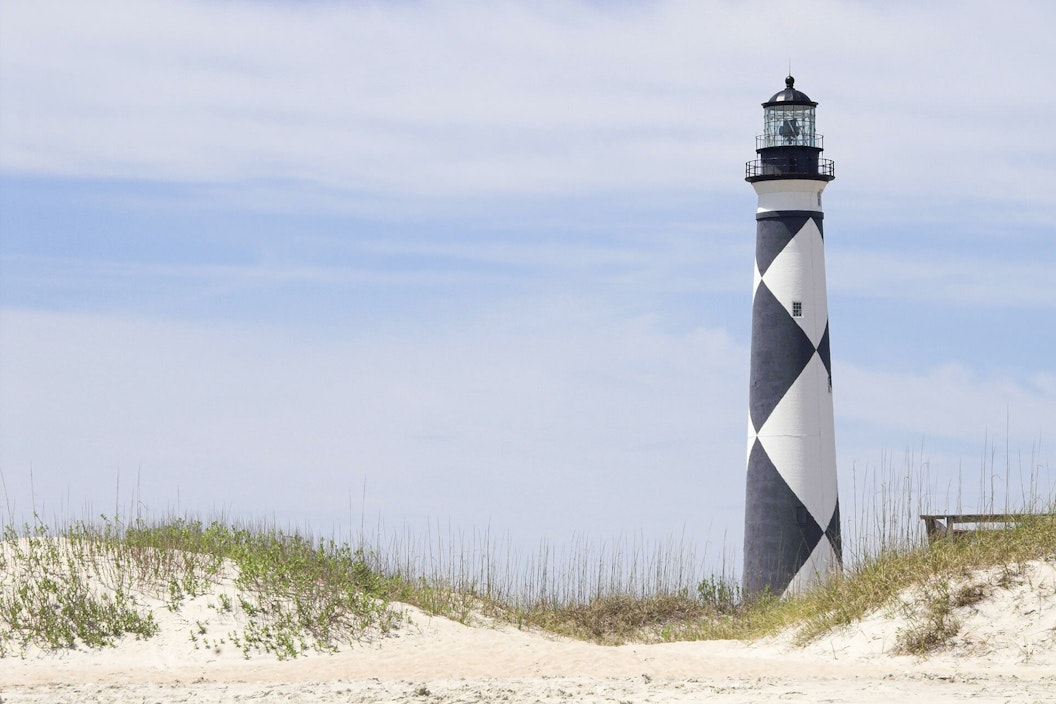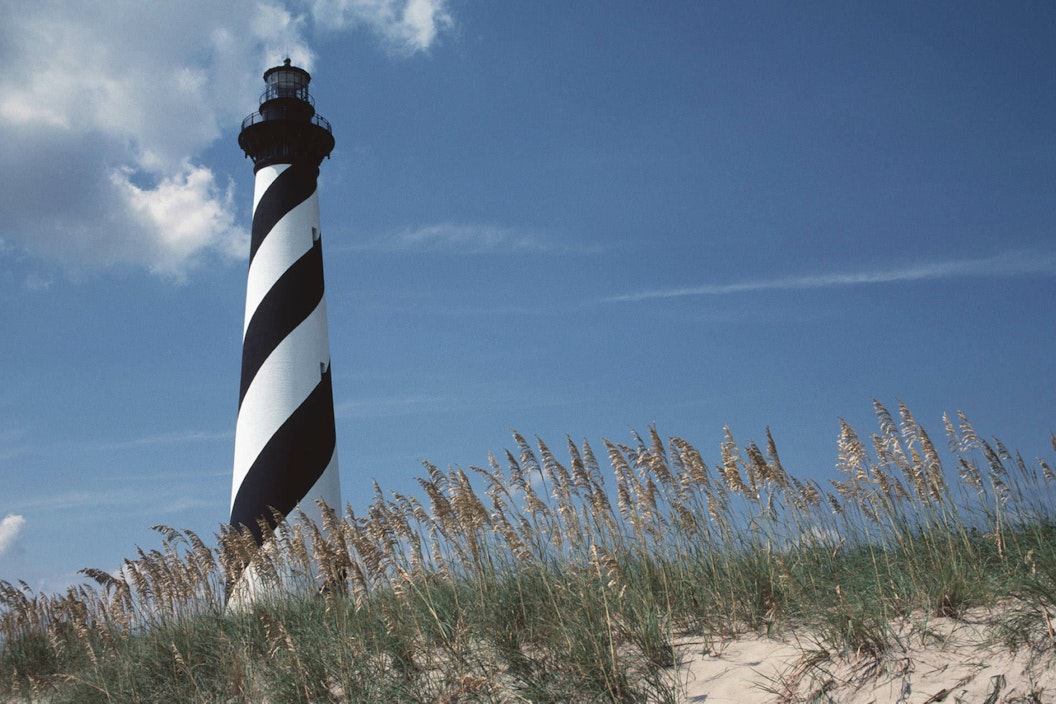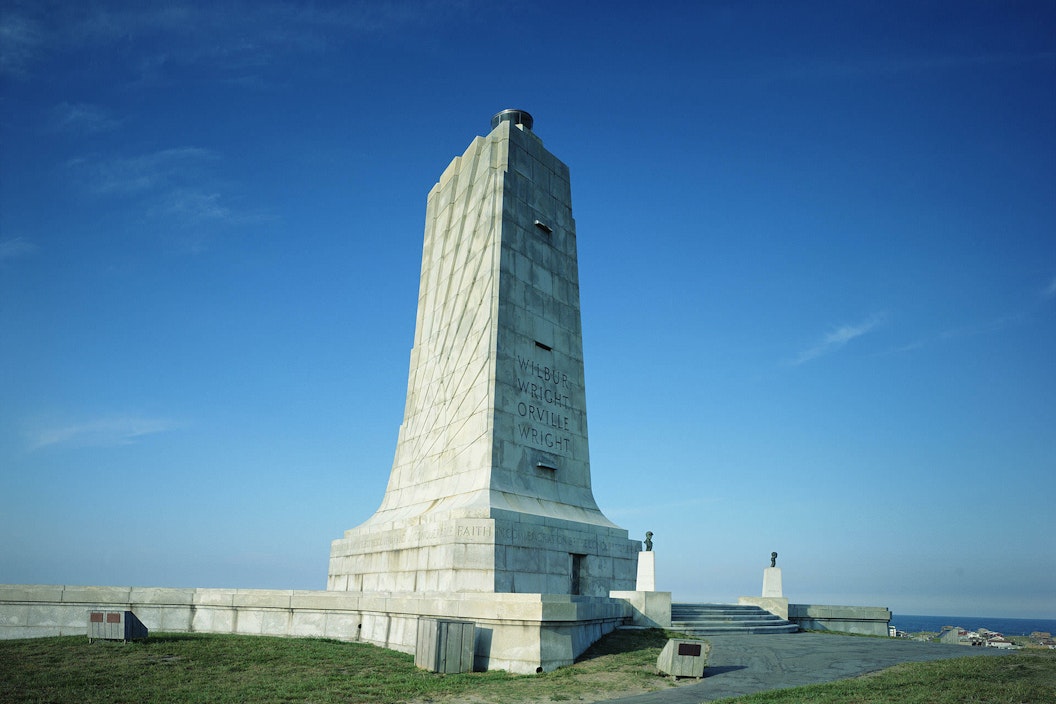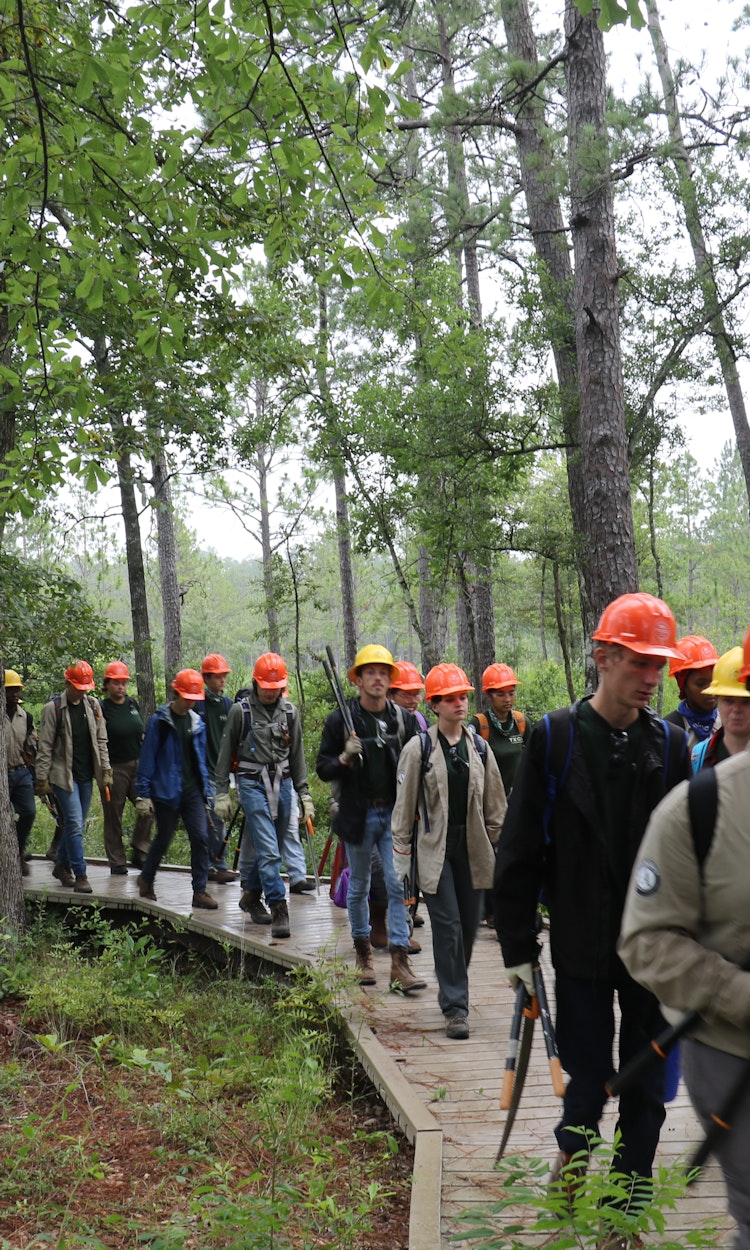
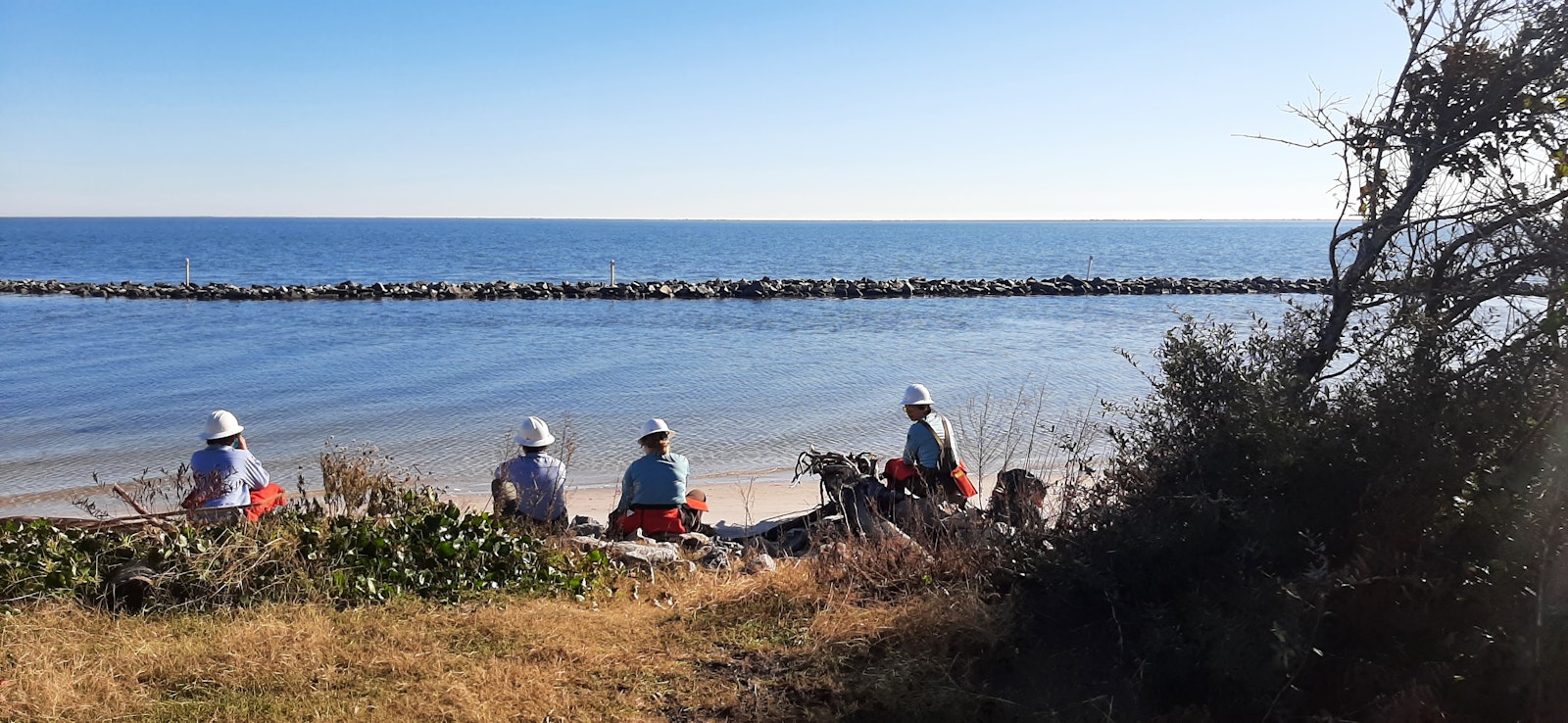
.
.
The National Park Foundation (NPF) provides financial support to service corps programs, which bring teams of young adults to national parks across the country to accomplish critical maintenance and natural resource projects. During their terms, corps members bond with their fellow crew members, see majestic sites, gain leadership skills, and make lasting contributions to the country’s public lands.
NPF helps our partners deploy inclusive, affinity service corps crews, such as LGBTQ+, American Sign Language, Latinx, all-women identifying, and Native American crews, which help participants feel safe and comfortable while learning new skills in the outdoors. Through generous funding from donors like the Hearst Foundation, NPF continues to grow our support of womxn in the service corps world. We spoke to young leaders who recently participated in an NPF-funded all womxn-identifying crew.
They recounted their service corps terms and shared insights into their personal and professional journeys. Read below to meet the crew members and hear about their experiences, in their own words.
Meet the Crew

Crew Leader: Allison Lincoln (she, her)
Assistant Crew Leader: "Nola Peach" Versfelt (she, her)
Crew Members: Laura Schimmel (she, her), Harlee Craddock (they, them), Erin Murr (they, them), Lela Waite (she, her), Erin Waldman (she, her)
A Season in the Field
Imagine waking up at 4:45 am in the dead of winter, gazing at the vivid sunrise on the ocean with a sharp sea breeze whipping your face. Though harsh, the wind offers a reprieve from the unrelenting mosquito swarms that dominate this small barrier island. Welcome to Portsmouth Village, part of Cape Lookout National Seashore! You’re about to join your crew for breakfast and a morning group run before a full day of technical hazard tree felling and bucking (cutting downed trees). This is what a typical morning looks like for Conservation Corps North Carolina’s (CCNC) Women’s Plus Advanced Saw Crew.
This eight-person crew worked in national parks along the coast of North Carolina from November to March 2021, including Cape Lookout National Seashore, Cape Hatteras National Seashore, and Wright Brothers National Memorial. The crew worked on the beach, in salt marshes, pine forests, cypress groves, and even an island. Their focus was on clearing hurricane-damaged areas, including snags and salt-killed trees.
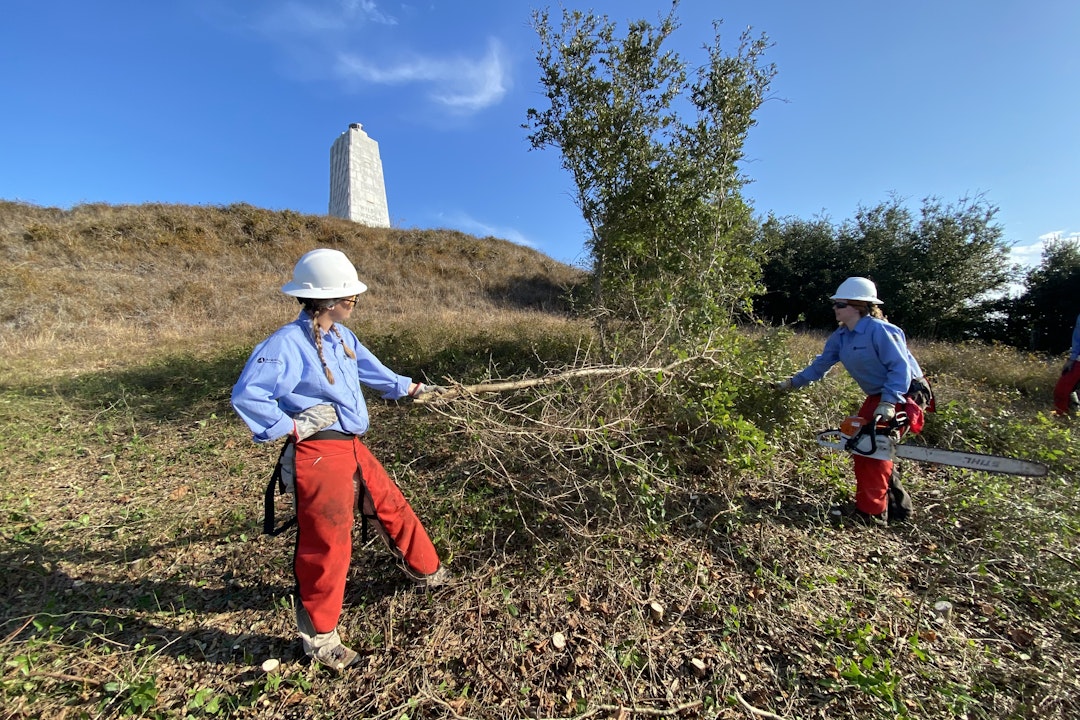
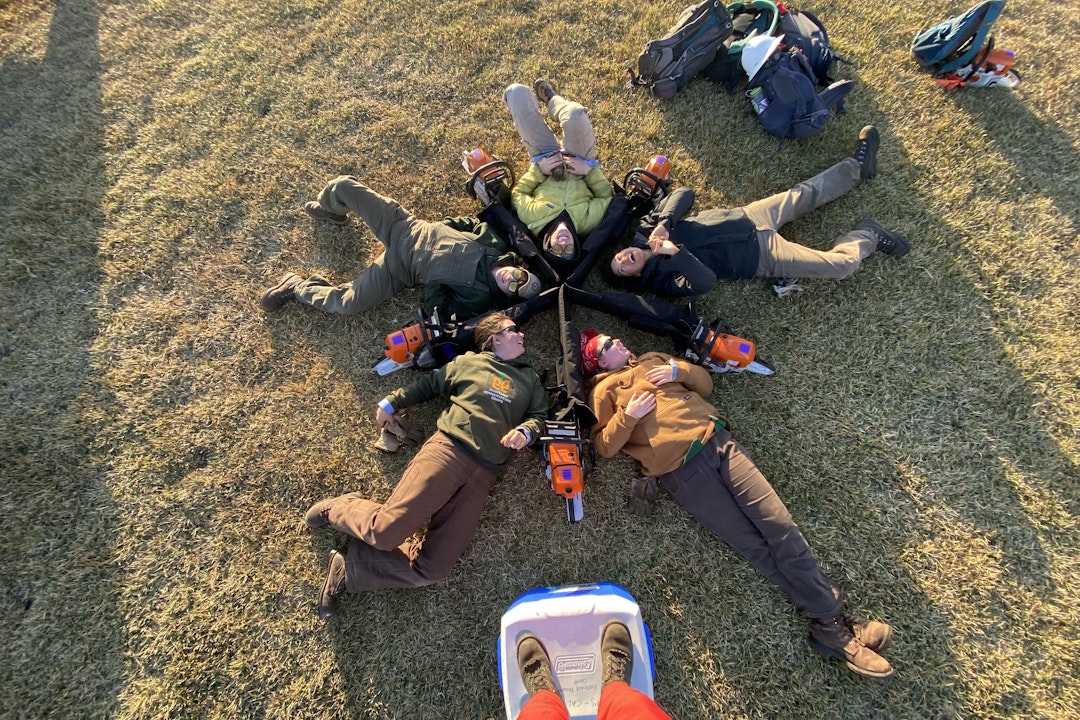
In the beginning of the season, the crew leaders concentrated on bringing everyone up to a higher cutting level to enable them to safely cut dead and complicated trees. The crew targeted specific skills they wanted to improve, such as taking a tree off a back lean, completing a double cut, or assessing heart rot and hinge wood integrity. Crew member Erin Murr credits the crew dynamic as a big part of why they were able to master such difficult work. “Being on this crew has meant a lot to me. It’s given me the space to grow my technical felling skills, and as a crew, we worked together to challenge and help build each other up...It’s fun to cut scary, sketchy trees when you know you have a whole crew of intelligent, capable people behind you to hype you up or talk [you] through different hazards.”
The crew found it interesting and heartbreaking to see the impact of climate change on the national parks. Part of their work at Cape Lookout National Seashore involved clearing salt killed cedar and pine trees in Portsmouth Village, a hazard to the Village’s historic buildings. The trees were victims of saltwater intrusion worsened by increases in the number and intensity of storms, rising sea levels, and higher temperatures. The crew worked with National Park Service (NPS) staff and volunteers who remembered when the trees were once healthy.
Every member on this crew had previous conservation corps experience, which allowed them to hit the ground running. Crew member Laura Schimmel said: “This is my third AmeriCorps term, and this crew was unique in the complexity of [its] scope of work. Crew leaders and members alike came in with several seasons of corps work so the baseline of experience was a lot higher, which allowed us to dive into the more technical skill trainings right away."
The crew’s past experiences helped them appreciate the opportunity to work at different NPS sites and to learn more about NPS. “We found every region and every park had its own way of doing things,” said crew member Ann Sergeant. “It is an awesome experience as a young person to have this experience to come to a place you haven’t worked before and adapt to how they do things. It is important to have your way of thinking and doing things challenged.”
Crew member Harlee Craddock found the affinity space to be helpful for skill-building: “This Women’s+ crew is void of ego. The skills we’ve learned this season have been historically exclusive to men [and in those groups], you’re constantly trying to assert yourself and prove you deserve to be in the space, which doesn’t always create an environment conducive to learning. Whereas we support each other and want everyone to succeed, which makes a productive learning environment. This crew has boosted my confidence and competence in chainsaw work. If this had not been an affinity crew, I would not have grown as much personally and professionally.”
At the end of the season, every member secured their next job, moving either into corps leadership, staff positions, or seasonal jobs with federal land management agencies. Crew member Lela Waite said: “Each member of this crew ended their season with a B sawyer skillset and the gracious opportunity for a B certification. Gaining a solid footing in the disciplines of felling, bucking, and rigging has provided us with a competitive edge for the more sought-after positions in conservation and federal service. I do believe that this crew is a career-maker for women and nonbinary individuals.”
Q&A with the Crew
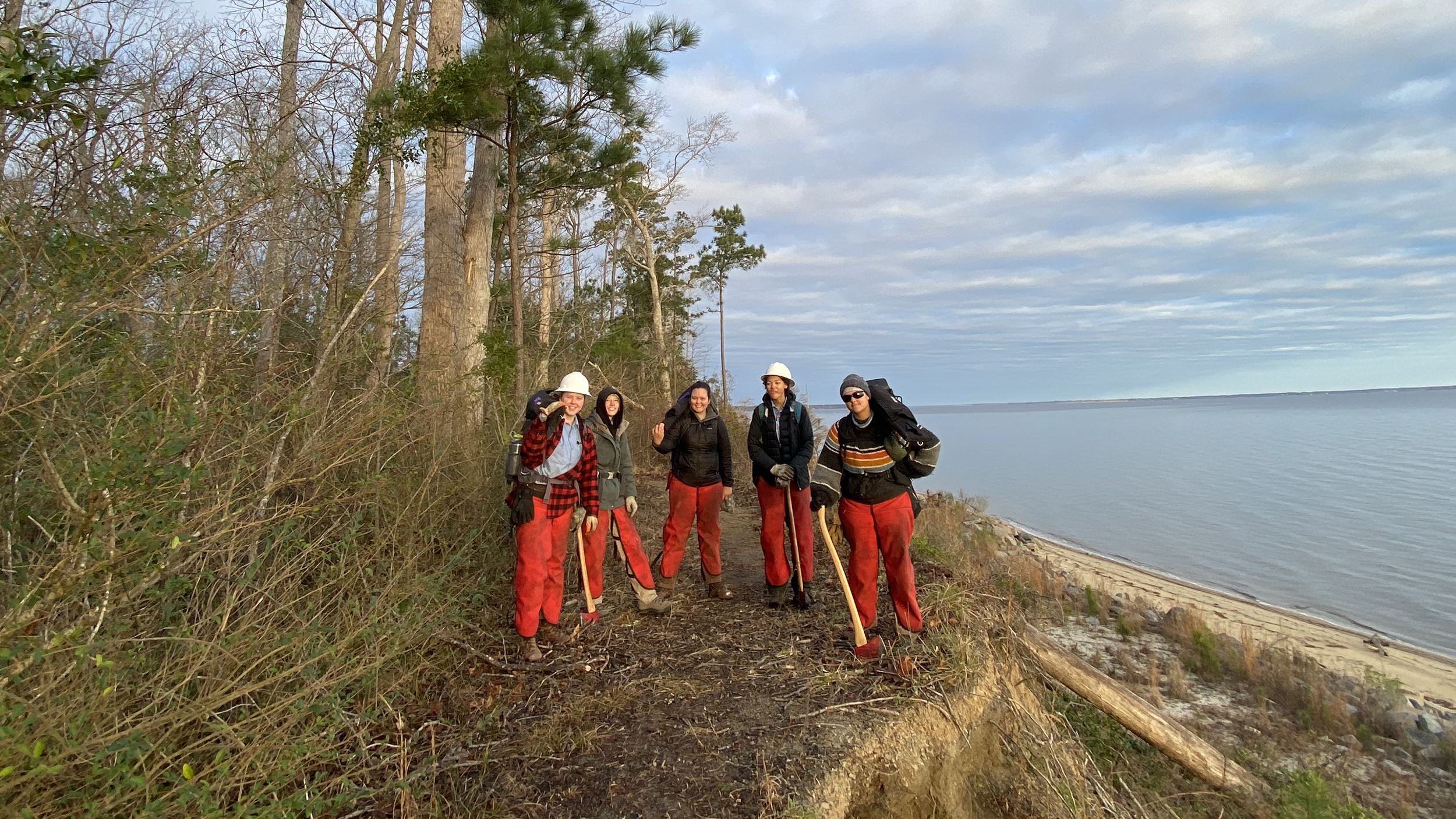
How is your personal journey interconnected with national parks?
Erin W: I went to national parks a lot as a kid. As I got older, I started venturing out on my own. It has been cool to now be working in them and giving back to them in a new way.
What accomplishment from your service corps time are you most proud of?
Nola V: Fostering a positive learning environment and growth opportunities for everyone. Everyone can answer their own questions and be part of the learning development experience. I’ve never been part of a crew in which everyone learned more than the basics.
Laura S: Learning more about trees and ecosystems in the southeast. This is a place that I haven’t spent much time before and to learn and become comfortable with working in another region is something I am proud of - how the hardwoods are different to cut than pines, how to deal with vines and other hazards, and the history of the region - I learned a lot.
What was your favorite part of serving in an all-female identifying service corps crew?
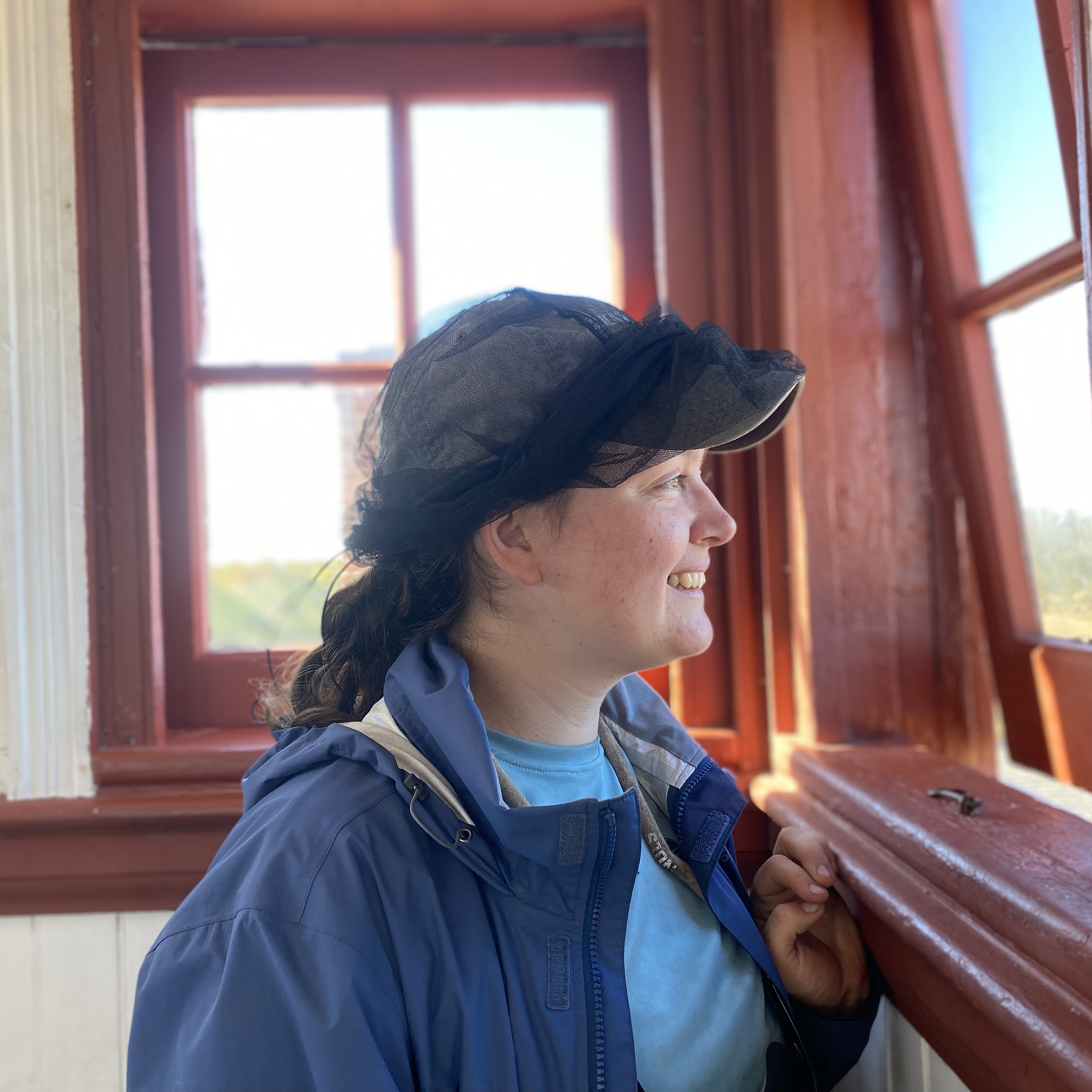
Laura S: I have never been on a crew before where the leaders were women. To work with two women who are incredibly competent sawyers and great teachers has been inspiring. They have shared a lot of their experience with corps work and working for the federal government, which has been helpful to me as I move in that direction, career-wise. And honestly, everyone on the crew is just so cool. We’ve impressed our project partners with our work accomplishments all while taking things only as seriously as they need to be taken; it’s been a lot of fun.
Why are all-female service corps programs important?
Allison L: This profession is traditionally male dominated. There are women and non-binary people who have an inkling to try this, but they get discouraged because it is so male dominated. People are therefore steered away from something that could be fulfilling for them. Affinity crews open the door and bridge the gap.
Erin W: I would not have applied to a saw- specific crew if it wasn’t this affinity crew. I would not have considered it to be something I could do. When it comes to mechanical, there was so much I didn’t understand. I would have been too intimidated to learn everything I needed to know on a regular co-ed crew.
Harlee C: There were no males on the crew project partners always deferred to. They will often immediately talk to the man present, even if they aren’t the crew lead. Because of this crew, they didn’t have the opportunity to do that.
What advice would you give others, especially females, that are interested in pursuing a service corps experience?
Allison L: Try both: a co-ed and an affinity crew. I hope affinity crews become more common.
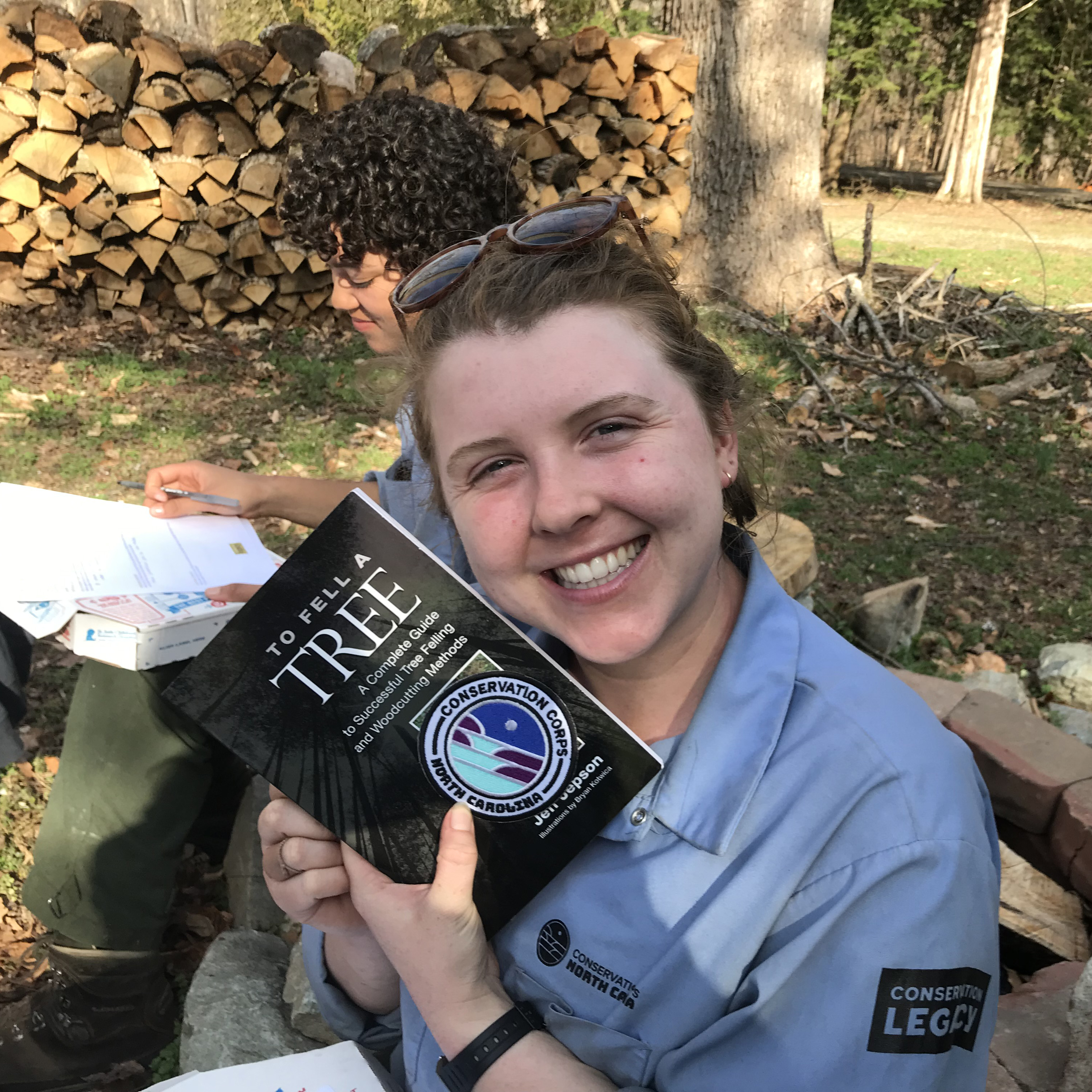
Erin W: I will only join an affinity crew. I did not intentionally seek out this crew as an affinity crew. This environment is so supportive, and everyone is interested in each other’s growth. There is no competition of who did this the best. A lot of peer learning. There is more collaboration.
What is the perfect idea for a crew graduation gift?
All: To Fell a Tree by Jeff Jepson
Allison L: We all love books and decided on this book for our graduation. I got it when I first got my B sawyer certification. Everyone is walking away from the crew with the qualifications to be a B sawyer. It will reinforce a lot of what B sawyers know.
Conservation Corps’ Women’s Plus Advanced Saw Crew was one of three service corps crews supported by Hearst Foundation funding. It is thanks, in part, to the support of NPF partners such as these that affinity crews can find camaraderie and community at our national parks. Learn more about how NPF’s support of Communities & Workforce engages the next generation of park stewards and how the Women in Parks program supports the trailblazing conservation work of women in national parks.
Endnote: In this piece, the National Park Foundation uses the language women, womxn, womxn-identifying, and female. While the intent is to honor inclusivity and be representative of various ways that people identify, we recognize that this language does not account for all identities.
Related Programs
-
 Service Corps
Service Corps -
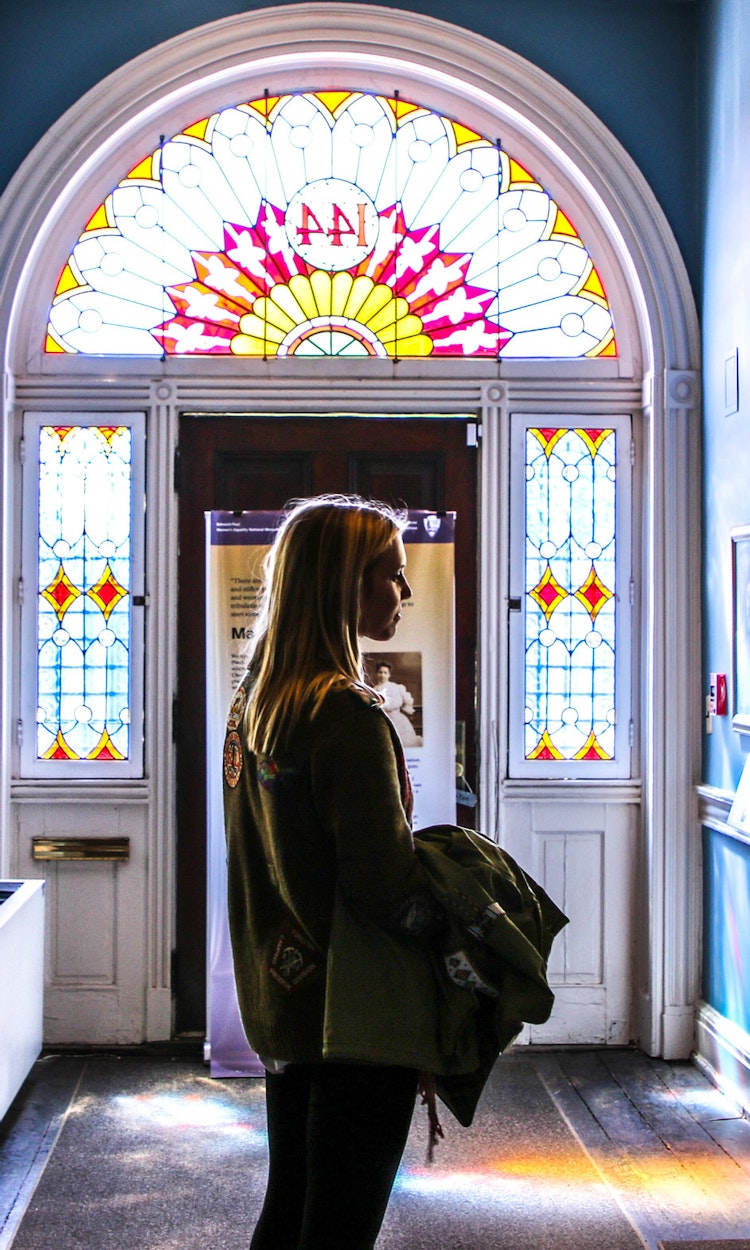 Women in Parks
Women in Parks
